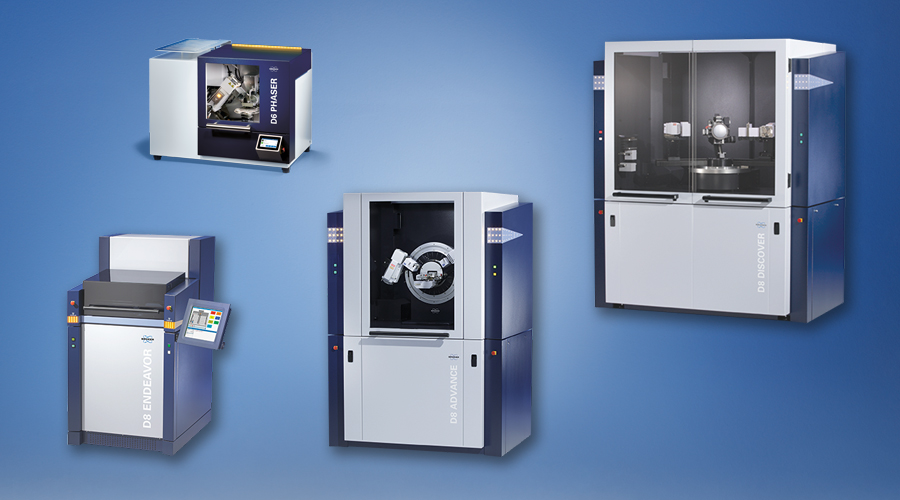

DIFFRAC.TOPAS
TOtal Pattern Analysis Solution
Driven by Innovation
TOPAS is a profile fitting based software for quantitative phase analysis, microstructure analysis and crystal structure analysis. Unique to TOPAS is its seamless integration of all currently employed profile fitting techniques as well as related applications, including
- Single Line and Whole Powder Pattern Fitting
- Indexing
- Whole Powder Pattern Decomposition
- Structure determination and refinement
- Microstructure analysis
- Quantitative phase analysis
TOPAS is built around a general non-linear least-squares system written specifically to integrate various types of Bragg diffraction and pair-distribution function data. This includes the ability to refine on any number of powder diffraction, single crystal diffraction and PDF data sets (laboratory and synchrotron X-ray, CW and TOF neutron data).
As a result of its unique analytical capabilities, TOPAS is the most used refinement software for Bragg and PDF data in both industry and academia.
Use Google Scholar and search for e.g. "TOPAS Bruker or Coelho" to get an idea of user applications and for an impressive list of literature references.
TOPAS Highlights
Quantitative phase analysis
TOPAS has drastically extended the capabilities and application areas of profile fitting based quantitative phase analysis.
Thanks to TOPAS‘ unique profile modelling capabilities (convolution based profile fitting, instrument function approach, and more) , the knowledge of the exact profile shape for each crystalline and amorphous phase allows accurate quantitative analysis to be carried out of much more complicated mixtures at much higher levels in accuracy.
Microstructure analysis
TOPAS offers unique possibilities for state-of-the-art microstructure analysis. Thanks to it's Direct Convolution Approach, TOPAS enables the determination of physically meaningful microstructure parameters based on the accurate discrimination between instrument and individual specimen contributions to a powder pattern.
Instrument functions may be either measured using a suitable standard reference material or calculated from first principles: Fundamental Parameters Approach (FPA).
Microstructure analysis is performed by directly fitting pre- or user-defined microstructure models directly to the data. TOPAS not only supports a variety of isotropic and anisotropic models based on the traditional integral-breadth method but also the WPPM method, a fully physical approach to microstructure analysis.
Structure determination and refinement
TOPAS is providing a unique and extremely powerful approach for structure analysis of any ordered or disordered inorganic, metalloorganic and organic compounds.
Most significantly, this approach seamlessly integrates 3 distinct techniques for structure determination, completion, and refinement:
- Global Rietveld refinement complemented by 3D (difference) Fourier analysis
- Charge Flipping method
- Pair Distribution function analysis
PDF Refinements at lightning speed
Downright sensational is the speed at which TOPAS performs PDF refinements. TOPAS is 3-6 orders of magnitude (!) faster than alternative software, with speed advantages increasing as the number of atomic pairs increase. Even with 100s of millions of atom pair interactions, calculation times are in the order of a few seconds per iteration on a current state-of-the art PC*).
As a result refinement times are reduced from hours to days downto to minutes or even seconds, thus allowing routine PDF refinements at speeds comparable to that traditional Rietveld refinements.
The real beauty
Probably the most significant aspect of TOPAS is it's flexible macro language supporting user-defined equations in an entirely general way.
This allows the user to introduce highly sophisticated/specialized refinement models into TOPAS without the need to modify the source code:
- Computer algebra system for function minimization and for the application of linear and non-linear restraints
- Support of user-defined refinement parameters / refinement models
DIFFRAC.TOPAS Resources
Flyers
- Total Pattern Analysis Solutions: Charge Flipping – 3D Fourier Maps – VCT – PONKCS
- TOPAS Quantitative phase analysis of phases with Partial Or No Known Crystal Structure: PONKCS
- Variable Counting Time: The Golden Standard for X-ray Data Collection
- TOPAS V6 (Joint) Bragg and PDF Refinements at Lightning Speed

